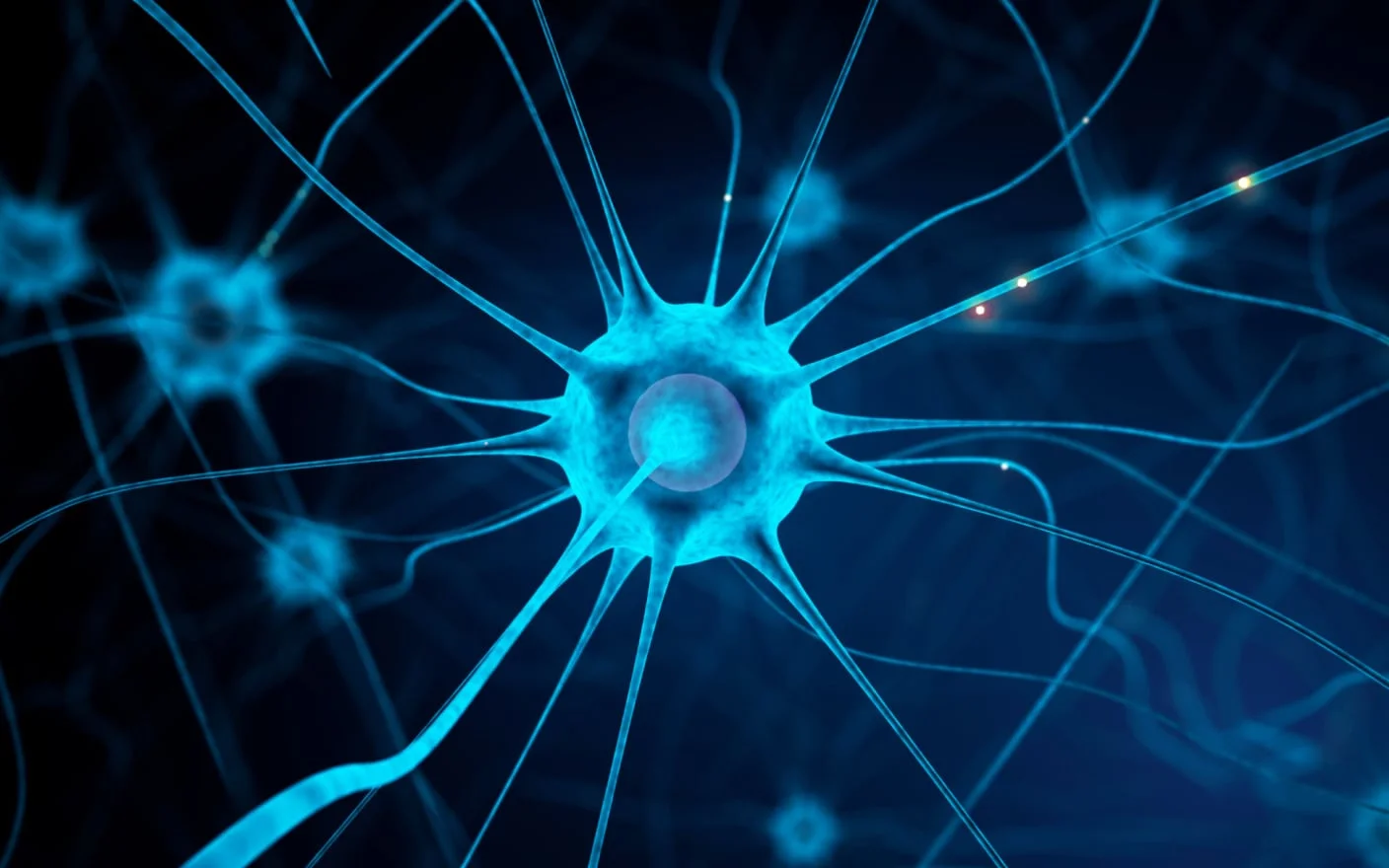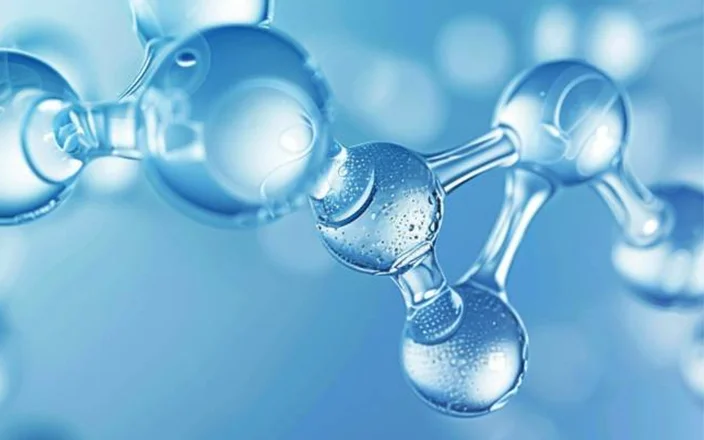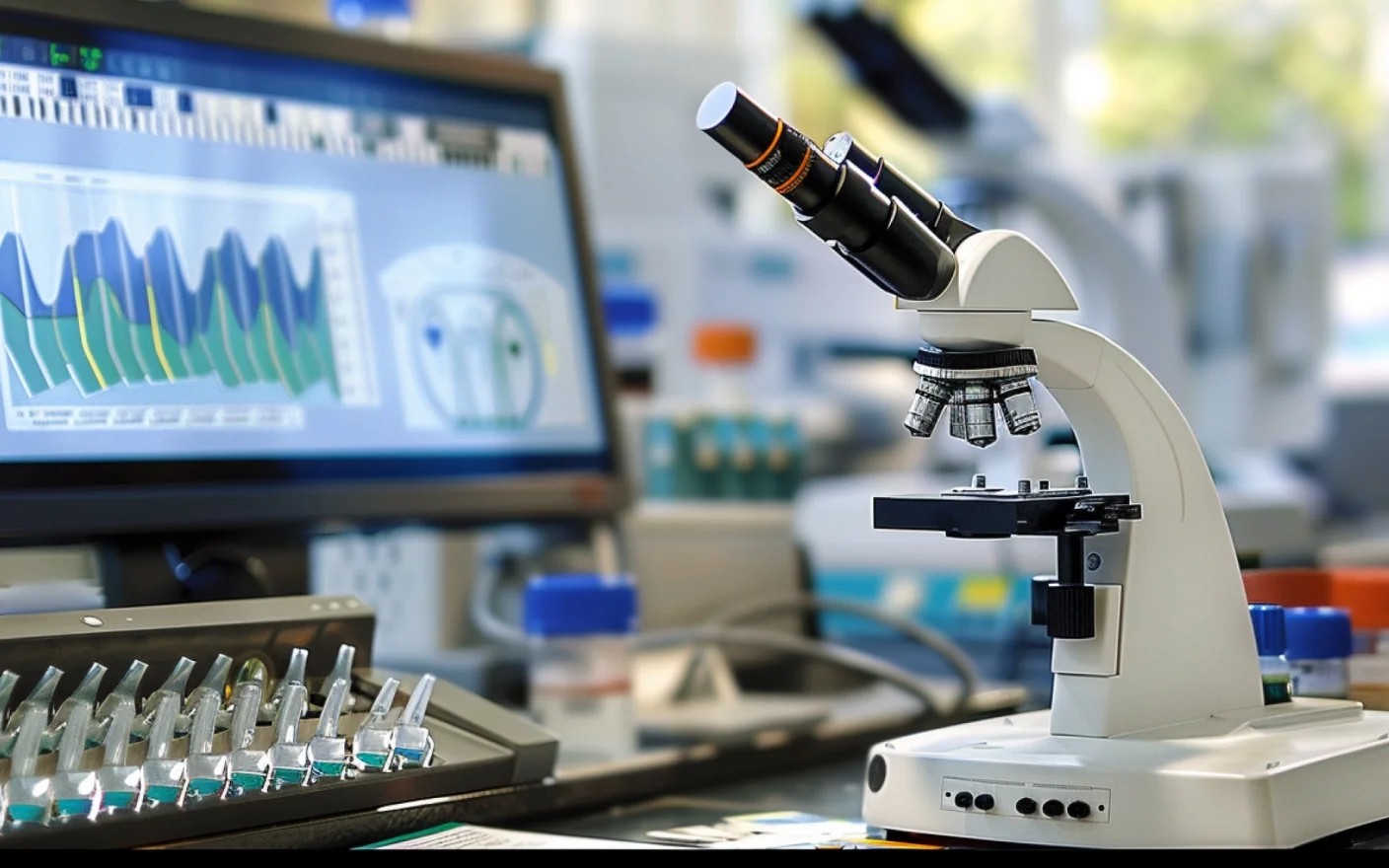Amino acid metabolism disorders are linked to over 400 diseases affecting vital organs such as the cardiovascular, central nervous, digestive, and urinary systems. Medicinal amino acids are used to regulate these levels in the body, aiding in maintaining physiological functions. This article explores the challenges and detection strategies in amino acid analysis as endogenous small molecule biomarkers in biological samples.
What is the Role of Amino Acids in Disease and Therapy
Based on pharmacological effects and clinical applications, commercially available medicinal amino acids can be categorized into five main types:
Nutritional Support: Supplements of essential and non-essential amino acids for malnutrition or postoperative recovery.
Organ Function Protection: For example, hepatoprotective agents that promote liver cell repair or detoxification.
Neuro-regulation: Such as neurotransmitter precursors or analogs involved in central nervous system regulation.
Immune Modulation: Activates immune cells or antibody synthesis, regulating immune responses.
Detoxification: Forms stable chelates with heavy metals or metabolic toxins, accelerating the elimination of toxins from the body.
Additionally, with the rise of metabolomics, tumor biology, and tumor reprogramming theories, amino acid metabolism has become a new focus in anti-tumor research[1]. Amino acids not only serve as nitrogen donors in the synthesis of biomacromolecules, impacting tumor cell proliferation, invasion, and immune evasion processes, but also act as crucial metabolic regulators influencing immune responses in the tumor microenvironment[2]. This dual mechanism makes changes in amino acid metabolism key clinical indicators for monitoring cancer progression and provides a theoretical foundation for developing targeted treatment strategies. More drugs are focusing on selectively killing tumor cells by regulating tumor-related amino acid metabolism, opening new research directions for cancer treatment (Table 1 lists some anti-tumor drugs targeting amino acid metabolism).
Table 1. Anti-Tumor Drugs Targeting Amino Acid Metabolism[3]
Drug | Tumor Indication | Target | Mechanism |
CB-839 | Triple-negative breast cancer | Glutaminase | Glutaminase inhibitor |
Sulfasalazine | Breast cancer | Cystine transporter | Cystine transporter inhibitor |
ADI-PEG20 | Pancreatic cancer | Arginine | Arginase enzyme |
JPH203 | Prostate cancer | L-type amino acid transporter | Competitive inhibition of L-type transporter |
NCT503 | Phosphoglycerate dehydrogenase-dependent breast cancer xenograft | Phosphoglycerate dehydrogenase | Inhibition of serine synthesis |
V9302 | Osteosarcoma xenograft | Glutamine transporter | Glutamine transporter inhibitor |
Structure of Amino Acids and Their Biological Functions
Definition and Structural Classification of Amino Acids
Amino acids are organic compounds containing both an amino group and a carboxyl group, with a basic structure as shown in Figure 1. Based on the carbon skeleton of the side chain R-group, they are classified into aliphatic, aromatic, and heterocyclic amino acids. Based on the polarity of the R-group, they are classified into polar and non-polar amino acids. Based on the ratio of amino (-NH2) and carboxyl (-COOH) groups in the molecule, they are classified into acidic, neutral, and basic amino acids. Based on the stereochemistry of the chiral center, they are classified into L and D configurations. The unique chemical structure of each amino acid gives them different physical and chemical properties, determining their crucial roles in biological activities.

Figure 1. General structure of amino acids
Biological Functions of Amino Acids
Amino acids are indispensable core molecules in life activities, playing multifaceted roles in the human body, including energy supply, biosynthesis, epigenetic regulation, post-translational modifications of proteins, and immune modulation.
Energy Supply (Figure 2.1): Branched-chain amino acids (BCAAs) are essential aliphatic amino acids. About 20% of the BCAAs ingested daily by humans are metabolized into acetyl-CoA, which then enters the tricarboxylic acid cycle to generate ATP, providing energy for the body.
Biosynthesis (Figure 2.2): Amino acids are the building blocks for proteins, lipids, nucleic acids, and other vital biomolecules. They also participate in the synthesis of various small biomolecules. For example, sulfur-containing amino acids can generate cysteine through reverse transsulfuration; glutathione provides electrons to reactive oxygen species, preventing them from damaging normal cells and protecting cells from chronic damage and inflammation.
Epigenetics, Protein Modifications, and Immune Modulation (Figure 2.3): Lysine degradation products participate in epigenetics and post-translational modifications through acetylation; amino acid derivatives such as kynurenine can modulate immune cell activity, influencing immune responses.
The physiological processes involving amino acids are closely related to maintaining cellular homeostasis and normal function, earning them the title "cornerstones of life." Abnormal concentrations may lead to diseases.

Figure 2. Biological functions of amino acids[3]
Therefore, amino acid analysis has become a crucial technique in modern health diagnostics and disease screening. Dynamically monitoring changes in amino acid metabolism within the body, it provides scientific evidence for early disease warning, pathological mechanism analysis, and personalized intervention. Mainstream amino acid profiling technology can accurately quantify amino acid concentrations in various biological samples like blood, urine, and cerebrospinal fluid, and, when combined with metabolomics models, reveal the distribution and dynamic changes of amino acids in different physiological cycles (e.g., liver-intestinal circulation, blood-brain barrier transport).
Amino Acid Analysis and Analytical Platforms
As shown in Figure 3, the main bioanalytical platforms for amino acid analysis and detection currently include Amino Acid Analyzers, Gas Chromatography-Mass Spectrometry (GC-MS/MS), Nuclear Magnetic Resonance (NMR), and Liquid Chromatography-Mass Spectrometry (LC–MS/MS). Each platform has its unique advantages and limitations (Figure 3). Researchers can choose the most suitable platform based on experimental goals and sample characteristics for precise analysis.

Figure 3. Comparison of amino acid analytical platforms[4]
Among these, LC-MS/MS technology is preferred in pharmacokinetics research for its high sensitivity, broad detection range, and excellent selectivity. This technique combines the high separation efficiency of liquid chromatography with the high sensitivity and selectivity of mass spectrometry, making it especially suitable for qualitative and quantitative analysis of amino acids in complex biological samples.
Challenges and Best Practices in LC-MS/MS Amino Acid Analysis
Developing analytical methods for biological samples based on the LC-MS/MS platform presents multiple technical challenges due to the structural characteristics of amino acids. These include the weak retention of highly polar amino acids in reverse-phase chromatography, the difficulty in separating isomers due to chiral centers, and the instability of certain amino acids in biological matrices, which are susceptible to interference from endogenous substances. WuXi AppTec DMPK has developed systematic solutions to address these challenges, achieving precise analysis with high sensitivity and selectivity, thus providing reliable data support.
Amino Acid Retention in Reverse-Phase Chromatography
As typical highly polar small molecules, amino acids face weak retention issues in reverse-phase chromatography due to inadequate affinity with the hydrophobic stationary phase. To address this, WuXi AppTec DMPK has developed and optimized various analytical methods for highly polar compounds on the LC-MS/MS platform (Table 2), systematically comparing the performance characteristics of each method.
Table 2. Comparison of Analytical Methods for Highly Polar Compounds[5]
Analytical Method | Advantages | Disadvantages |
Normal-Phase Chromatography | Fast separation speed, compatible with conventional normal-phase columns and mobile phases | High-toxicity organic solvent safety concerns, limited stationary phase choices, and poor solubility compatibility of analytes |
Ion-Exchange Chromatography | Clear retention mechanism, high separation selectivity, suitable for predictable separation scenarios | Difficult simultaneous separation of anions and cations, poor compatibility with MS |
Ion-Pair Reagent Reverse-Phase Chromatography | Significantly enhanced retention, compatible with reverse-phase systems | Ion-pair reagents may contaminate MS systems, potentially for MS ion suppression, difficult the simultaneous separation of anions and cations |
Derivatization Analysis | High selectivity, enhanced MS detection sensitivity | Requires additional derivatization steps, is time-consuming, possible interference from by-products, and requires strict optimization of reaction conditions |
Hydrophilic Interaction Chromatography (HILIC) | Compatible with reverse-phase liquid systems, simple sample preparation, and simultaneous analysis of acidic, neutral, and basic compounds | Long column equilibration time |
HILIC, integrating liquid-liquid partition, ion exchange, and hydrogen bonding mechanisms, is a relatively simple and versatile analysis technology, becoming the preferred method for amino acid analysis in biological samples. When applying this technique, attention should be given to optimizing the following parameters:
Sample Extraction Solvent: Acetonitrile is typically the solvent of choice to enhance analyte retention. For amino acids, alcohol reagents mixed with acetonitrile are often used to improve solubility.
Initial Organic Phase Ratio: Analyte retention correlates positively with the organic phase ratio in the mobile phase. The retention mechanism mainly relies on a dynamic hydrophilic layer formed by adsorbing water onto the stationary phase surface (to activate the hydrophilic partition effect, the hydrophilic layer must maintain at least 5% water content). When the water phase exceeds 50%, the hydrophilic layer structure collapses, breaking the partition effect-based retention mechanism, and compounds are no longer retained[6].
Buffer Solution: Introducing a buffer can enhance ion exchange and hydrogen bonding interactions between the analyte and the stationary phase, improving peak shape and separation, but must balance its suppression effect on MS sensitivity.
Mobile Phase pH: pH affects the ionization state of the analyte and the surface charge of the chromatographic packing, adjusting its retention behavior: high pH favors the retention of acidic compounds, while low pH favors basic compounds.
Flow Rate: With increasing liquid method flow rate, analyte retention capability gradually decreases, and peak width narrows. It's essential to comprehensively evaluate column particle size parameters and pressure tolerance thresholds to establish the optimal flow rate.
Column Temperature: Increasing column temperature generally reduces analyte retention, while decreasing solvent viscosity enhances mass transfer efficiency, thus improving column efficiency. Lower temperatures increase the distribution coefficient difference between the analyte and the stationary phase, thereby enhancing selectivity.
Chiral Separation in Amino Acid Analysis
Current mainstream solutions to this challenge are divided into two main types:
Indirect Derivatization Analysis: Using chiral derivatization reagents to convert enantiomers into diastereomers with significantly different physicochemical properties, separated using reverse-phase columns. Figure 4 shows an example of separating D/L-alanine using a triazine-type chiral derivatization reagent and analyzing it via LC-MS/MS[7].

Figure 4. (a) Derivatization reaction of D/L-alanine with triazine-type reagent DMT-(S)-Pro-OSu; (b) LC-MS/MS spectrum of derivatized products
Direct Chiral Column Analysis: This method involves using chiral stationary phase columns, such as cyclodextrin, macrocyclic antibiotics, or protein-bonded columns, to directly separate enantiomers based on stereoselective interactions (like hydrogen bonds and π-π stacking), a classic method for chiral separation.
However, for the rapid and precise analysis of enantiomers in complex biological matrices, traditional chromatography techniques still have limitations in high throughput, low solvent consumption, and MS compatibility. To address this, WuXi AppTec DMPK has established the UPCC-MS/MS platform, which combines the low viscosity and high diffusivity of gas chromatography with the broad applicability of liquid chromatography, significantly enhancing separation efficiency and achieving precise separation from small molecule drugs to peptide drugs, expanding the capabilities of chiral separation.
Stability of Amino Acids in Analysis
While amino acid compounds generally exhibit good matrix stability, specific structures or environmental factors in complex biological samples can still cause stability issues. The following cases illustrate the causes of instability and corresponding strategies.
Case 1: Cysteine Dimerization
Instability Mechanism: The free thiol group (-SH) in cysteine easily undergoes oxidation reactions with other thiol compounds (like another cysteine molecule), forming disulfide bridge-linked dimers (general structure shown in Figure 5a).
Solution Strategy: During sample preparation, adding reducing agents (such as TCEP or DTT) can break disulfide bonds, reducing dimers to monomers (general structure shown in Figure 5b), ensuring accurate quantitative analysis.

Figure 5. a. Oxidation of free thiol to a dimer; b. Reduction to monomer by TCEP
Case 2: Arginine Enzymatic Degradation in Liver Homogenate
Instability Mechanism: In liver tissue homogenate, arginase is highly expressed, catalyzing the conversion of arginine into ornithine and urea (metabolic pathway shown in Figure 6).

Figure 6. Metabolic pathway of arginine is catalyzed to ornithine by arginase[8]
Solution Strategy: Use isotopically labeled arginine as the target analyte to exclude endogenous interference, and design control experiments with and without 1M citric acid in the matrix to verify arginine metabolism and monitor ornithine production. Figure 7 shows the mass spectrometry response changes of arginine and ornithine, indicating that adding 1M citric acid to the liver homogenate effectively inhibited ornithine production. Citric acid solution is inferred to inhibit arginase activity, thus suppressing arginine's conversion to ornithine. WuXi AppTec DMPK offers systematic solutions to address instability issues in biological matrices.

Figure 7. Mass spectrometry response of arginine and ornithine in 80% MeOH without (top) and with 1M citric acid (bottom) homogenate
Overcoming Endogenous Interference in Amino Acid Analysis
Amino acids, as endogenous substances, usually exist in unknown quantities in biological matrices, potentially interfering with detection results. To tackle this challenge, four methods can achieve precise quantification:
Substitute Matrix Method: Use a substitute matrix without the analyte to prepare a standard curve, effectively avoiding endogenous interference in real matrices. It's the preferred method for quantifying endogenous compounds.
Substitute Analyte Method: Introduce a substitute analyte that doesn't exist or is present at very low levels in the body but matches the signal of the target analyte after verification and calibration. Establish a signal response model to detect the target analyte.
Background Subtraction Method: Simultaneously detect blank matrices and actual samples, subtract the blank's background signal from the sample signal to eliminate inherent interference, and accurately quantify the analyte's true concentration.
Standard Addition Method: Add known concentrations of the target analyte standard to actual samples in series, construct an addition concentration-response curve, and use linear regression extrapolation to calculate the analyte's concentration in the sample.
The Bottom Line
As an essential aspect of metabolomics, the demand for amino acid analysis and derivative analysis is growing with the advancement of precision medicine. Simultaneous detection of multi-component amino acids and quantification of trace amino acid derivatives pose higher analytical challenges. WuXi AppTec DMPK has accumulated extensive experience in amino acid analysis service and derivative detection, successfully establishing various detection methods to achieve high-throughput and efficient quantitative analysis of amino acids in multiple biological matrices (such as plasma, urine, and tissue), providing integrated amino acid services to support drug development processes.
Authors: Yanan Zhao, Li Gao, Yanfu Ren, Lili Xing
Talk to a WuXi AppTec expert today to get the support you need to achieve your drug development goals.
Committed to accelerating drug discovery and development, we offer a full range of discovery screening, preclinical development, clinical drug metabolism, and pharmacokinetic (DMPK) platforms and services. With research facilities in the United States (New Jersey) and China (Shanghai, Suzhou, Nanjing, and Nantong), 1,000+ scientists, and over fifteen years of experience in Investigational New Drug (IND) application, our DMPK team at WuXi AppTec are serving 1,600+ global clients, and have successfully supported 1,700+ IND applications.
Reference
1 Wang D, Wan X. Progress in research on the role of amino acid metabolic reprogramming in tumour therapy: A review[J]. Biomedicine & Pharmacotherapy, 2022, 156: 113923.
2 Zhang Xianhong, Zhang Siyu, Li Le. The role of amino acid metabolic reprogramming in tumor development[J]. Chinese Journal of Biochemistry and Molecular Biology, 2022: 1-22.
3 Lieu E L, Nguyen T, Rhyne S, et al. Amino acids in cancer[J]. Experimental & Molecular Medicine, 2020, 52(1): 15-30.
4 Xiong Xia, Yang Huansheng, Yin Yulong. Application of mass spectrometry in amino acid analysis methods[J]. Journal of Food and Biotechnology, 2012 (11): 1121-1127.
5 Hydrophilic interaction chromatography method development and troubleshooting. Technical overview.
6 Agilent.Appelblad P, Jonsson T, Pontén E, et al. A practical guide to HILIC[J]. Merck SeQuant AB, Sweden, 2008.
7 Mochizuki T, Takayama T, Todoroki K, et al. Towards the chiral metabolomics: Liquid chromatography–mass spectrometry based dl-amino acid analysis after labeling with a new chiral reagent, (S)-2, 5-dioxopyrrolidin-1-yl-1-(4, 6-dimethoxy-1, 3, 5-triazin-2-yl) pyrrolidine-2-carboxylate, and the application to saliva of healthy volunteers[J]. Analytica Chimica Acta, 2015, 875: 73-82.
8 Cama E, Colleluori D M, Emig F A, et al. Human arginase II: crystal structure and physiological role in male and female sexual arousal[J]. Biochemistry, 2003, 42(28): 8445-8451.
Stay Connected
Keep up with the latest news and insights.











